The lost symbolism behind common building materials
Editor of ArchitectureNow, Jacinda Rogers, looks into early symbolism behind five common building materials and uncovers some interesting facts surrounding their origins and early uses.
Interior designers and architects aim to beautify and meet a spaces’ practical needs, but the most celebrated designers go a step further — they tell a story through choice of material and form, tapping into an existing ‘genius loci’ or sense of place. But with today’s consumerism culture, we now need to put considerable time and effort into creating a connection to place in our buildings — often through self-directed research and initiative.
With local craftspeople and indigenization now overtaken by mass-production, achieving a visceral sense of place and belonging is becoming much more difficult. We can see a desperate need for a deeper connection in consumers with nostalgia-driven trends (even for the 90s!), becoming popular among Millennials and Gen Z, expressed widely in the recent pottery and houseplant revival.
“Although the internet can be a minefield of seductive ideas and images, there are a multitude of sources online that can help us reassociate materials with their original context, thereby reinstating broken links to the past. The goal being to instil a meaningful narrative into our homes, workplaces and those places we frequently inhabit.”
Complicating matters further are apps like Instagram and Pinterest selling the latest “nostalgia-infused vintage furniture & décor trends” along with a plethora of other ‘trending’ aesthetics in an effort to drive up the market.
Although the internet can be a minefield of seductive ideas and images, there are a multitude of sources online that can help us reassociate materials with their original context, thereby reinstating broken links to the past. The goal being to instil a meaningful narrative into our homes, workplaces and those places we frequently inhabit.
Even with the steady advance of capitalism driving up consumerism, and the commodification of our natural resources — now judged primarily for its aesthetic, practical or perceived value — we can regain sight of the traditional symbology and historical meaning behind many of the common building materials seen all around us to help to relieve the growing alienation between ourselves and our everyday surroundings.
So without further ado, let’s find out how these five common building materials were viewed by past generations, to find something of interest, a spark of inspiration, and to regain some sociocultural context surrounding their traditional symbology and meaning.
Symbolism of wood
Just to have a day or two of “forest bathing” these days is considered a kind of luxury, akin to an expensive yoga class or something you do on holiday — or on the weekends (if you’re lucky). It’s difficult to fathom a world where forests were everpresent, our creation stories, myths and legends featuring forests and woodlands as a source of eternal fear, inspiration and wonder.
In this largely forested world pre-industrialisation, natural groves of ancient trees fostered millions upon millions of ecological interconnections, built up over many thousands of years. It’s easy to comprehend how trees could have felt like the source of all knowledge to early man. In many cultures references to the ‘Tree of life’ or ‘World tree’ is evidence of the tree as symbolic of the link between life — present, future and past.
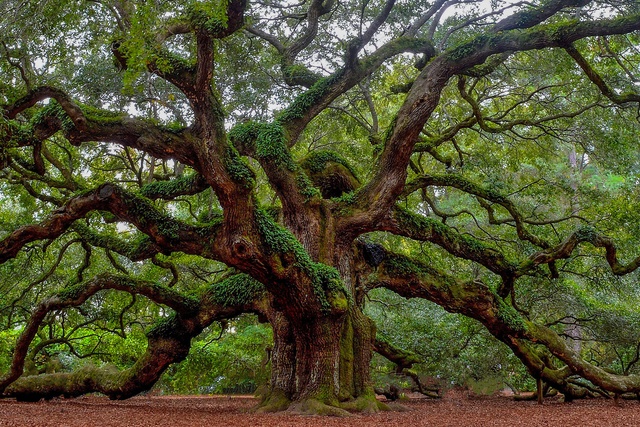

Evergreen trees were seen as symbols of eternity, while deciduous trees symbols of growth, death and rebirth. Celtic polytheism and Germanic mythology both appear to have involved Celtic practices in sacred groves — especially oak — of which much modern furniture is made today. The term ‘druid’ itself possibly derives from the Celtic word for oak. The oak tree in particular was considered sacred to many, housing the ‘great spirit’ and a being source of all the world’s wisdom.
As with the oak tree, countless cultures believed that tree spirits dwell in certain trees and would die if theat tree were cut down. The person who cut down a sacred tree might be punished by the Gods in some mysterious way. In Aotearoa New Zealand, podacarpae species, such as rimu, matai and tōtara dominated the canopy and were seen by Māori as “the chiefs of the family of Tāne, the god of forests and birds”.1
Unfortunately the loss of these ancient podocarps corresponding to the arrival of first wave of European settlers of the country, saw a significant reduction in the native bird population, who rely on native conifer trees as a primary food source. Extensive logging of our native trees — starting in the 1840s and continuing over the next 150-years — clashed with Māori beliefs and customs, causing the timber trade to sometimes come to a complete halt due to conflict.2
As an essential building material — with sustainable credentials — wood is used extensively for building and it is selected for building performance and price. For interior features using wood, a quick online search to select wood that’s symbology and history matches the project is encouraged and ideally sourced from sustainable forests with iwi backing. A great source of traditional Māori beliefs in regard to our native trees can be found on Te Ara Encyclopedia.
In addition, building around existing mature trees, or incorporating them into a building’s design is a surefire way to reconnect us with these natural sources of wellbeing, and support the health of the wider environment.
Symbolism of glass
“The history of architecture is the history of the struggle for the window,” said Le Corbusier, in 1929.3
It’s hard to imagine a world without transparent glazing, but glass as we know it is quite a recent invention. Glass panes were first made in the early Imperial period in Rome, namely to keep out drafts in public baths.4 In England, up until the late 17th century, animal horn was used instead of glass, and window panes were small due to the scale of glass sheets able to be made.
Later in 1851, Joeseph Paxton’s extensive use of glass as a building material for the Crystal Palace heralded in the common use of glazing in architecture. This was made possible by a new manufacturing process developed by the British Crown Glass Company in collaboration with the French-British glassmaker Georges Bontemps. Modern sheet-glass as we know it is the result of that French-British collaboration.
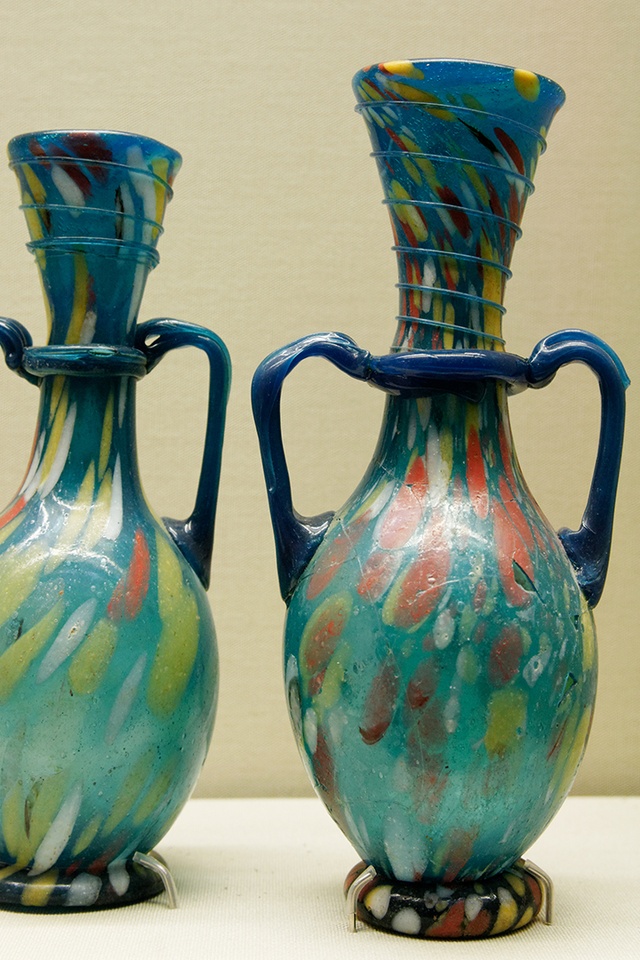

However, glass as a product was made as early as the Neolithic period, and manufactured glass is believed to have come into production from the 3rd millennia BC in Mesopotamia.5
The earliest glass was almost always blue-green in colour through the addition of copper. It was so opaque and rich in blue-green that it was coined ‘the lapis lazuli of the kiln’ in the ancient near-East.6
It was a luxury product during this period — exclusive to Kings and Queens and the upper-classes — and was deeply coloured, rather than transparent like we’re used to seeing glass today. As Doris Möncke associate professor of Glass Science and Engineering commented in a 2022 video forum discussing the history of glass,7 that the manmade material “…was used like gems, and held the value of gems.” Furthermore, as it was very hard to make glass objects, it was thought that the Gods had a hand in its production. “An old glass manufacturer was located near the palace and the monopoly of the ruler,” Mönke says — a clear indication of the glassmith’s status in society.
To reference the material’s colourful history, one might use blue or multi-coloured semi-opaque or opague glass to bring back those links to its roots in early civilisation and introduce some welcome variation and craftmanship.
Symbolism of ceramics
Pottery is undoubtedly one of the oldest crafts known to humankind. The fusion of clay and fire is as primal a combination as it gets and connects us to our past in a truly visceral way.
Traditionally, pottery was created primarily by womenfolk, and many of its common forms (still seen today), are symbols of the divine feminine.
The vessel, for example, is commonly understood to represent the womb. The chalice, cup, or goblet represents the source of inexhaustible sustenance or abundance, the heart and salvation, plenty, immortality, and receptivity. The pitcher is a symbol of purity, and of washing the hands in innocence. Gourd-shaped vessels represent mystery and longevity.8
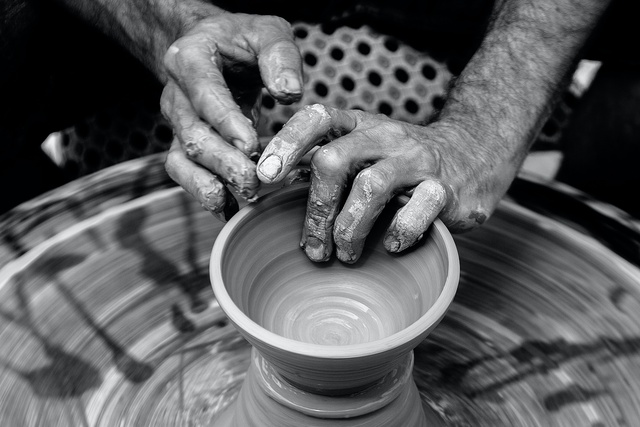
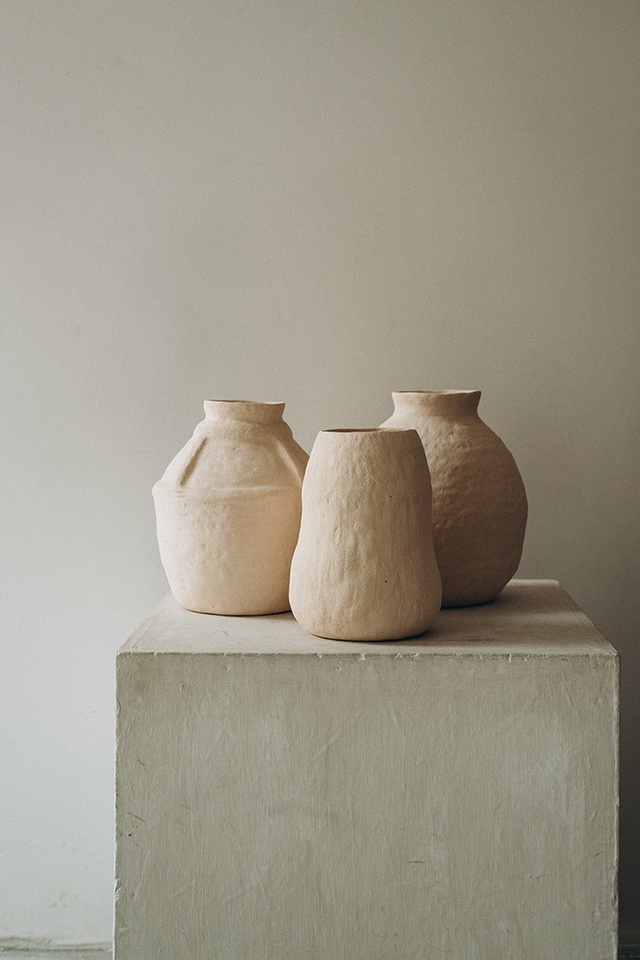
The use of ceramics to store large quantities of grain supported early agricultural communities and was integral to the survival of early farming villages. These communities formed the basis of our modern towns and cities, thereby the humble ceramic vessel can be directly attributed to the success of this mode of living.
Ceramics materials, therefore, have a direct link to the farmhouse vernacular, the land and to agricultural activities.
Arising in Japan, around 700 years ago was the concept of ‘wabi-sabi’, which is thought to reflect the imperfection of all life. The idea that the hand-crafted ceramic object takes on a natural character and is imbued with a life of its own is part of what makes pottery so popular today.
We are now accustomed to mass-produced ceramics that have been stripped of this handmade spirit to retain only the practical and aesthetic qualities of the end-product. Ironically, the ‘made in China’ mass-produced wares are known for being inexpensive and poor quality, when historically the Chinese are among the world’s masters of ceramic crafts.9
The therapeutic quality of working with traditional clay and its association with ‘mindfulness’ has given ceramics a new lease on life and an appreciation of handmade ceramics has seen a resurgence in the West. In other areas of the world you can still find traditional pottery made in century’s-old fashion. Think: Burkina Faso, Mata Ortiz in Mexico, Charai Taba India, and the Yunnan Province of China.
A few pieces of handmade pottery will enhance any décor and bring in a natural, domestic and comforting quality. Especially resonating in a rural context but applicable in any building style or vernacular — bringing in a human touch and feminine quality to the typically minimalist and masculine visual language of today’s modernist-style interiors.
Symbolism of metal
Metal has shaped the course of humanity in a very powerful way, being a force of both destruction in the form of weapons, and also creation in the form of tools — key to our survial. Many metals have lore and symbolism that are centuries old. in the West, metals were explored via the practice of alchemy, which was intrinsically liked to the planets and their accepted astrological characteristics.
In the East, metal is associated with the Earth’s minerals, the force of gravity, electrical conductivity and magnetism. The energy it gives off according to Chinese custom is “consolidating and with an inward movement, like a flower closing its petal”. It’s represented by the colour white and round shapes, the planet Venus and is symbolised by the white tiger.10
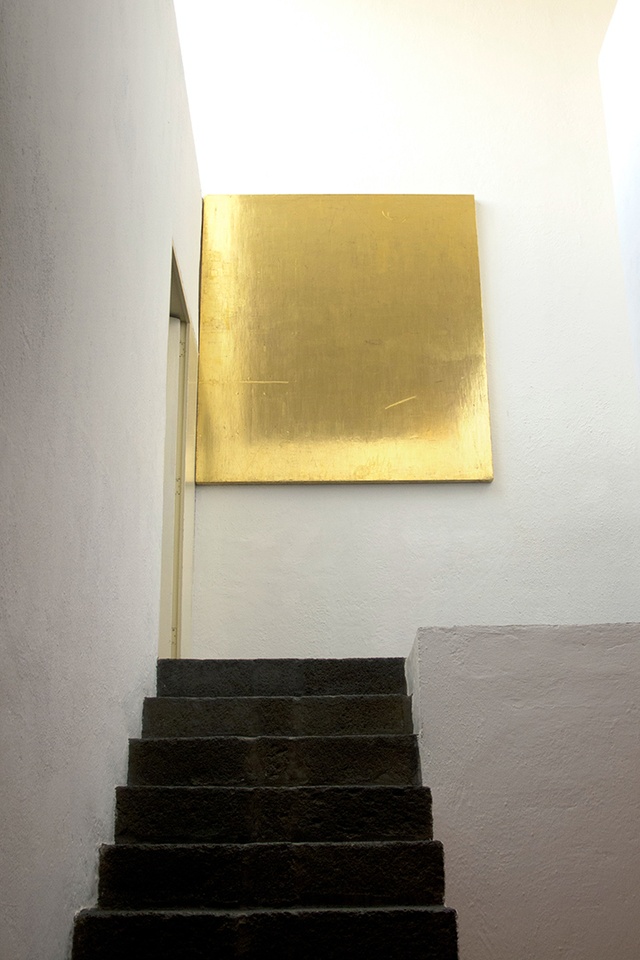

Metals are often found in utilitarian areas of the home and accents in the form of décor, furniture and lighting and is widely used as a structural material and façade. When viewed in terms of the human experience the metal used is typically chosen for its colour, performance and aesthetic quality, however knowing the associated symbolism behind metals can add a new layer of meaning to your interior or exterior façade selections.
In the below list, I’ve included the modern alloys of chrome and steel that we often see in home interiors, with histories — although short by comparison — that are rich with symbology.
Symbolism of common metals:
- Gold - the solar/masculine. A symbol of royalty and prosperity, it denotes wisdom, wealth, virtue and permanence.
- Silver - the lunar/feminine. Associated with fluidity, intuition and transformation.
- Iron - planet Mars/masculine. It’s connected to physical power, merciless aggression (i.e. ‘to rule with an iron fist’), humanity, protection (think horse shoe above a doorway), strength and tenacity.
- Steel - planet Jupiter & Mars/masculine. An alloy of carbon and iron. Commonly associated with the World Wars and industrialisation, but also strength, durability, courage and determination.
- Copper - planet Venus/feminine. Symbolising love, beauty and creativity. Traditionally believed it could bring balance to whatever it’s added to or used for.
- Brass - the solar/masculine. An alloy of copper and zinc. Vitality of the human mind and regaining of one’s metal capabilities. Serving to keep the mind youthful and to prevent conservatism.
- Chrome - from khrōma, a Greek word meaning colour. Chromium, named for its ability to produce vivid, colourful compounds was first invented in 1797. As an alloyed metal, it becomes a bright silver, typically seen on Mid Century modern furniture as plating. This modern material could be the first LGBTQIA+ rainbow-coloured gender-ambiguous metal!
Symbolism of stone
Stone has captured and mesmerised us since the dawn of human civilisation. There is a sense it carries the secrets of the earth, its permanence forming an unbreaking link between the present going back aeons. Falling from the sky in the form of meteors, weathering all storms and forming the basis for all landforms — the primordial links between us and the world’s stone connect us deeply to nature and with our inherited spiritual legacy.
“Many will notice that the magic of stone is diminished when removed from its natural habitat and that a re-invigoration by the elements — be it wind, water, moonlight or earth — gives the material back its animism or spirit.”
Touching stone is like getting to the centre or core of all life, and touching its very essence. Stone forms the very bones or the building blocks of the earth. Many will notice that the magic of stone is diminished when removed from its natural habitat and that a re-invigoration by the elements — be it wind, water, moonlight or earth — gives the material back its animism or spirit. A phenomenon which was described by Carl Jung as ‘numinosity’ — an inexplicable and mystifying experience suggesting the presence of the divine.11
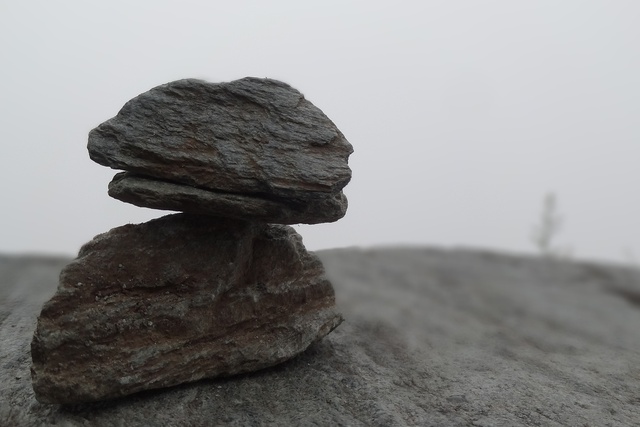
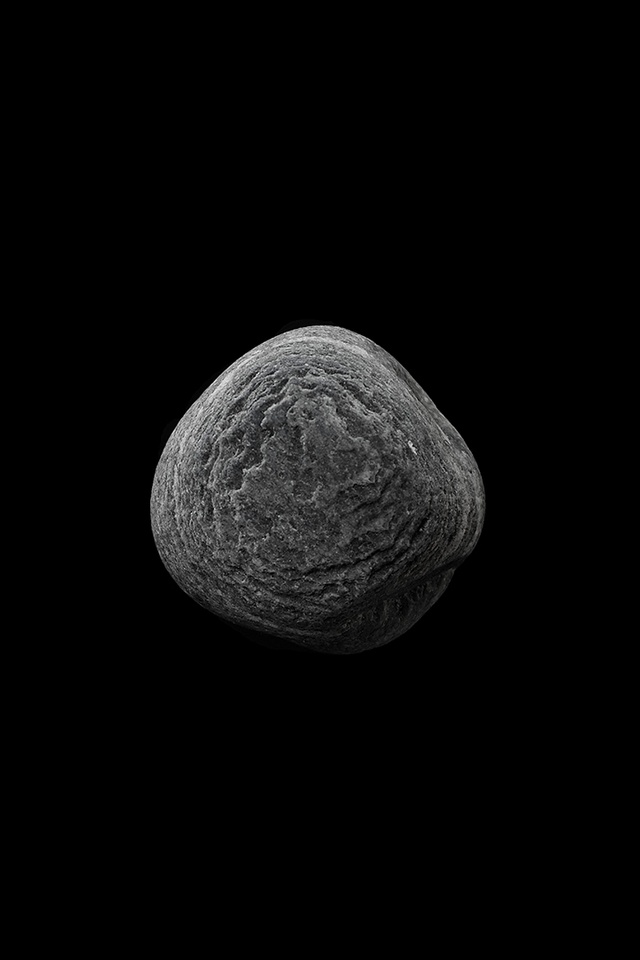
Providing an explanation for our affinity with rocks, there is research that suggests that humans and other sentient beings co-evolved with rocks and minerals. In a 2016 interview with Smithsonian Magazine reporter Maya Wei-Hass, Carnegie Science geologist Robert Hazen claimed his team found evidence that life was assisted by minerals that subsequently evolved through contact with ever-evolving lifeforms. Hazen’s findings indicate an “…Intertwined co-evolution of the geosphere and biosphere,” where “Life begets rock, rocks beget life.”12
Today, it’s common to see stone used for kitchen benchtops, flooring, wall accents or any area where a hard utilitarian surface is required. Many stone products for the home are manmade — giving the look of stone but leaving it devoid of its inherent mystery and earth-centric vibration. Prized for its beauty, permanence and durability, stone is largely viewed as a symbol of luxury and wealth in the home, but remains a symbol of longevity and quality.
Traditionally stone, (especially large rocky outcrops) were viewed as incredibly scared, thought to house the dead, and revered for the permanence and deep connection felt when bonding with them through physical touch. Ancient man could sense the age of this natural geological phenomena and understood its qualities innately, leading to its traditional symbology and legacy, listed below:
- Strength and endurance
- Perseverance
- Divinity
- Stability
- Protection
- Spiritual transformation
- Connectedness
- Transcendence
- Housing spirits
- Wisdom
In Italy and later in the 18th century — spread via the English landscape movement — was a trend for grottos (man-made, or decorated natural caves). These quiet, dark and private places were seen as places of essential contemplation, where ruminative thought could lead you to ask the big questions — what is the meaning of life? — and where you reconnected with your innermost self and recharged on a spiritual level.
Adding a feature stone or two in an enclosed courtyard or introducing a simple combination of stone and water, can help bring some of this steadfast material’s natural mystery into any space and encourages interaction and contemplation through its grounding element.
Creating a cool and tucked away grotto environment using stone or natural landscape elements can also help us escape the drain of urban life and encourages rumination — once considered an essential element of a garden to the sophisticated elite — back into modern day lives.
Conclusion
With so much rapid change happening to our built environment paired with the unpredicatibity and uncertainty of political and social climates, it is vital that we make conscious choices about what materials and objects we choose to surround ourselves with, and that we understand what statements these choices make. Disassociation and indifference will only lead to increasing alienation between ourselves and the world around us — factors that drive consumerism in the search of a sense of belonging. It is the responsibility of architects and designers to instil a sense of place back into spaces devoid of ‘place’ to provide an offering that speaks to the people, to the locality, and that honours the past while redefining the present.
Further reading can be found in the references below. To read more articles like this subscribe to our weekly newsletter and keep updated via Instagram @architecture.nz
References
1. Evans, Monica. (2018, December 17). “A Māori community leans on tradition to restore its forest” (“Mongabay Series: Indigenous Peoples and Conservation”). Mongabay. https://news.mongabay.com/2018/12/a-maori-community-leans-on-tradition-in-regaining-custody-of-its-forest/
2. Swarbrick, Nancy. (2007, September 24). “Logging native forests” (“The timber trade before 1840” section, para. 2). TeAra.govt.nz. https://teara.govt.nz/en/logging-native-forests/print#:~:text=Systematic%20tree%20felling%20began%20as,remaining%20forests%20by%20about%20half.
3. Anderson Windows. (2005, August). “Architects’ Widening View of Windows: Technical Advances Elevate the Role of Fenestration”. Continuing Education Center Architecture + Construction. https://continuingeducation.bnpmedia.com/article_print.php?C=358&L=5
4. Trentinella, Rosemary. (2003, October). “Roman Glass”. The Met. https://www.metmuseum.org/toah/hd/rgls/hd_rgls.htm
5. Dr. Willburger, Nina (n.d.). Landesmuseum Württemberg. “Fascinating World of Ancient Glass”. Google Arts and Culture. https://artsandculture.google.com/story/fascinating-world-of-ancient-glass/FgVxR4tDzmzPSA
6. Wilke, Carolyn. (2021, November 24). “A Brief Scientific History of Glass”. Smithsonian Magazine. https://www.smithsonianmag.com/science-nature/a-brief-scientific-history-of-glass-180979117/
7. Alfred University Bergren Forum. (2022, April 12). “The History of Glass Science & Technology with Doris Möncke”. (“Bronze Age” chapter, 10:08), Youtube.com. https://www.youtube.com/watch?v=ukmEjMsdxm0
8. IvyPanda. (2019, April 17). Pottery and its Role in the Lives of People. https://ivypanda.com/essays/pottery-and-its-role-in-the-lives-of-people/
9. Conroy, Kathleen, E. (n.d.) “You say “Vase,” I say “Väse”: Looking at the Evolution of Chinese Ceramics”. academic.mu.edu. https://academic.mu.edu/meissnerd/conroy.htm
10. (2016). “Five Elements or the Five States of Change” (“METAL (Chinese: 金, pinyin: jīn)” section). One World nations Online. https://www.nationsonline.org/oneworld/Chinese_Customs/five_elements.htm
11. Stein, Maurray. (2020, October 14). “On the Importance of Numinous Experience in the Alchemy of Individuation” (“On Healing and Numinous Experience” section, para. 2). C G Jung Institute of Chicago. https://jungchicago.org/blog/murray-stein-on-the-importance-of-numinous-experience-in-the-alchemy-of-individuation/
12. Wei-Haas, Maya. (2016, January 13). “Life and Rocks may have co-evolved on Earth”. Smithsonian Magazine. https://www.smithsonianmag.com/science-nature/life-and-rocks-may-have-co-evolved-on-earth-180957807/









